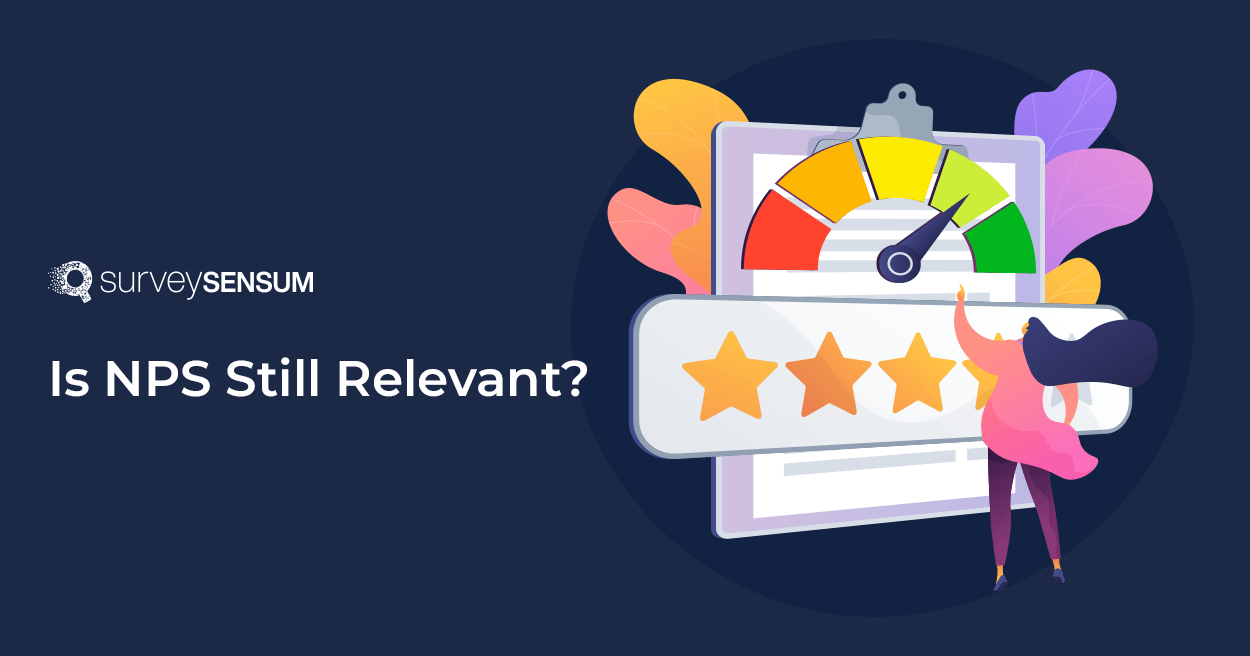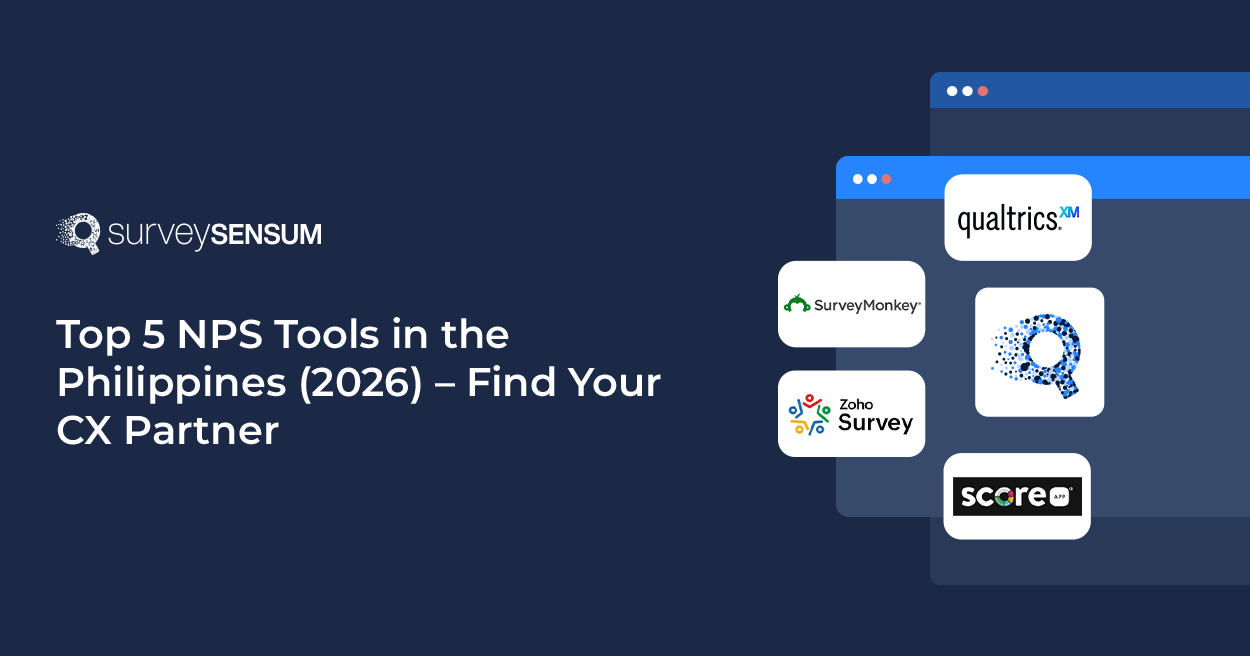

NPS has long been a go-to metric for businesses seeking to gauge customer loyalty and satisfaction. However, as businesses adapt to changing consumer behaviors and expectations, a critical question emerges – ‘Is NPS still relevant in the ever-changing business environment?’
If you have wondered the same and are still sending NPS surveys JUST because everyone is doing it, then you are not alone.
Improving customer experience is a multifaceted process and the simplicity of the NPS question does have some limitations that hinder you from truly understanding and addressing customer needs, no matter how robust your NPS software is. This is why you need to rethink your approach to understanding and improving customer experience.
Limiting yourself to just the loyalty metric won’t provide you with a holistic view of your customer’s experience, you also need to focus on other metrics like customer effort, satisfaction, etc.
So, what are these alternative NPS metrics that better capture the nuances of today’s diverse and dynamic customer interactions? Scroll down to find out!
With this blog, we will unravel the limitations of NPS and why businesses need to stop putting so much importance on it. Along with it, we will also delve into different types of customer satisfaction metrics that can be used along with NPS to measure satisfaction and loyalty more effectively.
Why NPS is Not a Good Metric?
If you are still heavily dependent on NPS to improve your customer satisfaction and loyalty, then you must understand what you are doing wrong. Here are a few reasons why you shouldn’t only focus on NPS.
1. NPS is Not a Good Predictor of Growth or Customer Behavior
The simple question – “How likely are you to recommend us?” doesn’t capture the multifaceted nature of customer satisfaction. It only captures one aspect – how many customers will recommend your product or service to others. While understanding customer recommendations is valuable, they do not capture the full spectrum of customer behavior, such as repeat purchases, upsells, or product satisfaction.
NPS often focuses on dividing customers into promoters, passives, and detractors. This categorization oversimplifies customer sentiments and fails to capture the nuances of their experiences and feedback. For example, a customer giving you a rating of 5 is considered a detractor but, that doesn’t mean the customer is completely dissatisfied with your product or service, they simply might not have people to recommend you.
2. NPS Only Shows a Single Dimension of Loyalty
There are three types of customer loyalty:
- Advocacy
- Purchasing
- Retention
Now, when it comes to NPS, it only focuses on one type of loyalty – advocacy. But what about the other two types of loyalty?
Loyalty involves not only attracting new customers but also retaining existing ones. NPS doesn’t address customer retention. It also doesn’t delve into the level of customer engagement that contributes to a positive relationship between the customer and the brand.
Some of your customers may be loyal to you without actively promoting your brand or expressing their loyalty in surveys, and your NPS survey is missing them out.
3. NPS Tends to Skew to the Extremes
NPS uses a scale of 0 to 10 for respondents to rate their likelihood of recommending a product or service. And more often than not, customers who are extremely happy or have something to complain about tend to respond to extreme ends. Rarely does anyone who has had a ‘modera
tely happy’ experience responds to the survey.
This tends to create feedback bias as you only get to understand the experience of customers who have had an extremely negative or extremely positive experience. This will prevent you from understanding the experiences of people in the middle – what worked for them?
4. NPS Doesn’t Tell You What You Need to Fix
The simple question of NPS – “How likely are you to recommend us to others?” tends to limit your NPS analysis to only loyalty and doesn’t provide detailed insights into specific areas that need improvement to enhance customer satisfaction.
For example, if a customer gives you a low NPS score that doesn’t necessarily mean they are completely dissatisfied with your brand, it might be because of a customer service call with a certain agent.
So, without follow-up questions or qualitative data, it’s challenging to understand the factors influencing the customer’s rating and what aspects of the product or service are contributing to their satisfaction or dissatisfaction.
Launch NPS, CSAT, or CES Surveys For Free
5. NPS Doesn’t Tell You What is Popular
Another limitation of the NPS scale question is that it doesn’t provide insights into what specific products, features, or aspects of your business are popular among your customers. This is because NPS focuses on measuring overall customer satisfaction and loyalty. This is why it fails to reveal the specific factors contributing to customer sentiment.
This metric doesn’t provide insights into what is working with your customers, or what aspect of your business they love. This information is crucial for any business to identify its popular offerings and market them efficiently.
6. NPS Doesn’t Take Consumer Demographics Into Account
Demographic factors such as age, gender, income, and geographic location can significantly influence customer preferences, expectations, and behaviors. NPS surveys provide a single score for an entire customer base without segmenting respondents based on demographic characteristics. This homogenous approach hides variations in sentiment among different demographic groups.
For example, customers from younger and older generations may have different preferences for products, customer service experiences, etc and NPS alone can not reveal these variations.
7. Gaming the NPS Score
The most critical problem with the NPS gaming score is that it can be rigged by intentional actions taken by team members to improve their NPS scores without necessarily improving the underlying customer experience.
For example, a customer service agent may feel pressured or motivated by an incentive to persuade customers to give them a higher NPS score, potentially neglecting genuine customer issues to meet performance targets. This leads to biased ratings and won’t result in corrective action.
So, these are all the reasons why NPS, as an individual metric, is not best for your business. These limitations can be resolved by combining NPS with metrics like CSAT, CES, etc, to holistically evaluate your customer experience. Let’s see how you should measure your customer experience correctly.
So, How Should You Measure Customer Experience? – 3 CX Metrics
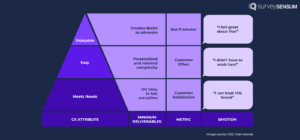
Image source: CSG International
NPS is a popular metric and you can use different types of NPS when it comes to gauging customer satisfaction and loyalty, but it isn’t the only metric. In order to gain a holistic understanding of your customer satisfaction and enhance your customer experience you need to make sure that,
- Your customer’s needs are met
- Their journey is easy
- They have a positive and enjoyable experience with you.
But how to ensure it? Let’s see
1. Meet the Basic Customer Experience Needs
Customers interact with your business because they are looking for something you might have. They have a need and you provide the means to fulfill that need. Here you need to make sure that every interaction they have with your business is satisfactory and above.
And in order to do that, send CSAT surveys to gather feedback from your customers at every interaction to gauge their satisfaction at the particular interaction. For example, Amazon sends CSAT surveys post-delivery to gauge customer satisfaction with the delivery experience.
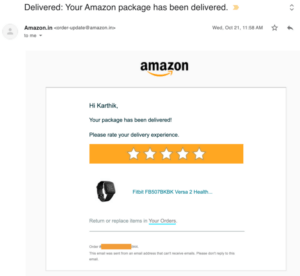
Launch CSAT Surveys For Free
2. Make Customer Experiences Easy and Memorable
Satisfying your customers’ needs isn’t enough, you also need to make sure that the journey they take with you is easy, effortless, and memorable for them.
In fact, 73% of customers say that customer experience is a very important factor in their purchasing decision, so much so that even if they love a company or product, 59% will still walk away after several bad experiences and 17% will walk away after just one bad experience.
So, streamline your customer journey by simplifying processes. Remove unnecessary steps, reduce friction points, and make it easy for customers to accomplish their goals, whether it’s making a purchase, resolving an issue, or accessing information.
Now, to ensure that your customer journey is easy, regularly send CES surveys to your customers to understand their experiences related to the completion of different tasks. For example, send a CES survey to a new user who just created an account on your platform to understand their experience with the onboarding process – was it easy or difficult?
Act on the feedback to make improvements based on customer suggestions and address the pain points they identify.
Launch CES Surveys For Free
3. Create Enjoyable Experiences
Do you know that customers are likely to spend 140% more after a positive experience than customers who report negative experiences?
Creating satisfactory experiences for customers is no longer an optional strategy, it is crucial for fostering positive relationships and building brand loyalty. And to do that, you need to,
- Understand your customers and tailor your products, services, and interactions to align with what resonates positively with your target audience.
- Leverage data and technology to deliver personalized experiences. You need to show that you understand and appreciate each customer.
- Incorporate surprise and delight elements in your customer interactions. Unexpected perks, personalized discounts, or loyalty programs can create good experiences and build positive associations with your brand.
- Regularly gather feedback from customers and use it to make continuous improvements. Customers appreciate seeing that their input is valued, and the iterative process of enhancement contributes to a more enjoyable experience over time.
So, instead of using only NPS complement it with CSAT and CES to measure customer satisfaction and loyalty. This will not only enhance their satisfaction but will also help you create brand advocates.
So, Is NPS Still Relevant – Yes
Many business experts and market researchers believe that NPS is obsolete. Gartner already predicts that 75% of businesses will abandon NPS as a reliable metric by 2025. However, NPS still holds importance when it comes to measuring customer satisfaction and loyalty.
But, it is also important to note that NPS shouldn’t be treated as a resolution, but rather as a guiding metric that guides you on the path to improve customer experience. And it is also important to understand the correct way to send an NPS survey so that you don’t overwhelm your customers.
But, How to Use NPS the Right Way?
- Ask it the right way: Asking customers to rate their likelihood of recommending a product doesn’t reveal their experience and sentiment. So, along with the NPS question, ask an open-ended question for qualitative feedback. This will allow your customers to express their experience which will help you understand what worked or what didn’t work for them.
- Ask it at the right time: More often than not, businesses make the mistake of launching NPS surveys at the wrong time which leads to low NPS response rates. For rNPS, you should send the survey after the customer has spent some time with your product or service. It can be quarterly, annually, etc. For tNPS, you should send the survey after particular interactions, such as customer support calls, etc.
- rNPS vs tNPS: NPS assesses the overall relationship with your brand, while tNPS focuses on specific transactions or interactions. Both types of NPS can provide unique insights, but as NPS is a loyalty metric, we recommend sending CSAT surveys instead of tNPS.
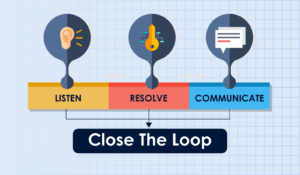
- Take Action: Collecting and calculating NPS scores is just the starting point. The real value comes from acting on the feedback received. Implement a closed-loop feedback system. This will ensure that customer feedback is addressed promptly. This proactive approach demonstrates to customers that their feedback is valued and can contribute to improving customer retention and the overall customer experience.
- Take Help from NPS Consultants: Seeking assistance from NPS consultants can be beneficial, especially for businesses looking to optimize their NPS program. SurveySensum offers dedicated NPS experts who will guide you through the entire process and will help you extract maximum benefit from your NPS surveys.
Conclusion
All in all, NPS is not dead, it’s still very relevant in the business world when it comes to measuring customer satisfaction and loyalty. However, it has many limitations that need to be addressed. Limitations like feedback bias, inability to identify and resolve issues, limited to only showing one dimension of loyalty, doesn’t provide actionable insights into what to fix, and more.
These limitations can hamper your goal of improving your customer experience. So, instead of treating NPS as the ultimate solution, you need to look at it as the guiding metric and complement it with other important metrics like CSAT and CES.
Your ultimate goal should be to understand your customer’s needs and expectations to improve their experience. To do that you need a robust NPS software tool, like SurveySensum, to launch NPS, CSAT, and CES surveys analyze the data, and extract actionable insights.








